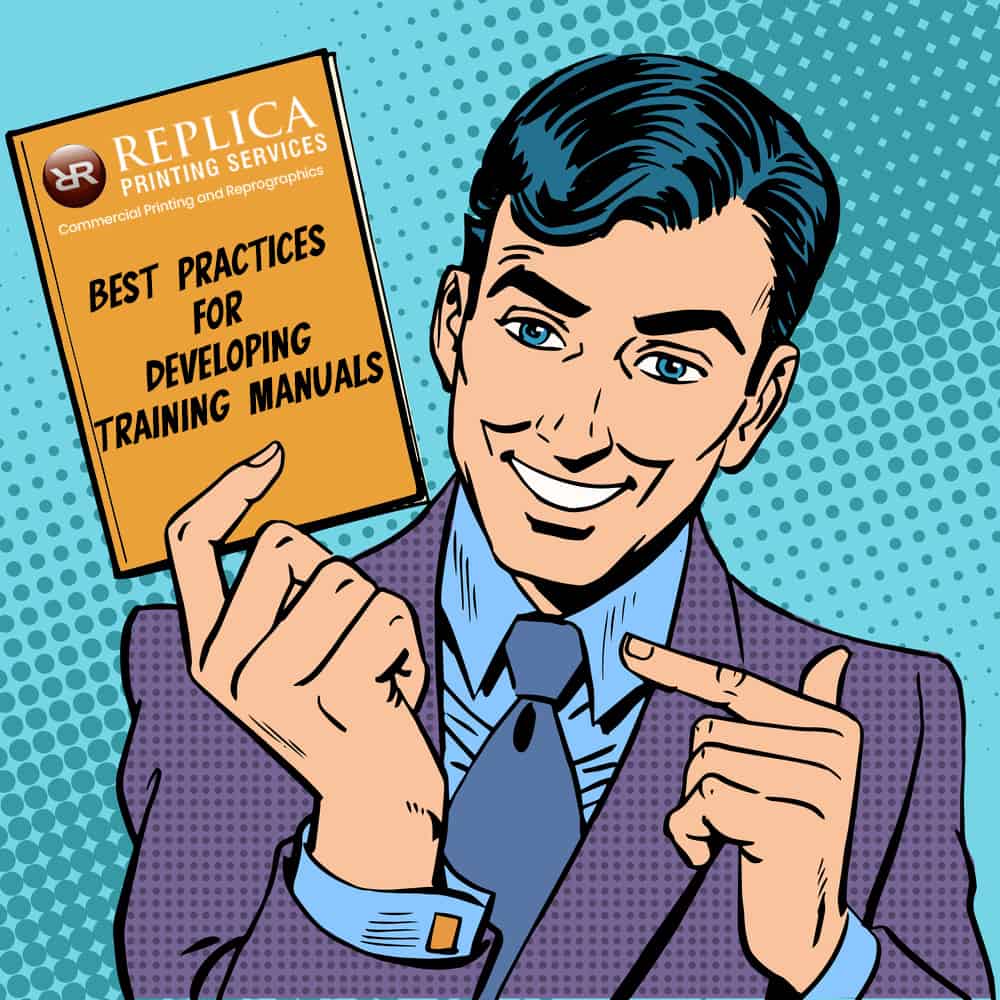Best Practices for Developing Training Manuals
Conducting a successful training seminar requires careful planning, organization, and effective communication. We at Replica would argue that the most important component of that communication is the participant’s training manual. Creating effective training manuals is essential for ensuring that your audience learns and retains the information you’re trying to convey. These manuals provide a structured way to educate employees, users, or trainees about specific processes, procedures, products, or services. Here are some best practices for designing and developing training manuals:
Define Clear Objectives:
Start by defining clear learning objectives. What do you want the trainees to know or be able to do after reading the manual?
Understand Your Audience:
Know your audience’s background, knowledge level, and any specific needs they may have. Tailor the manual to their level of expertise.
Keep it Organized:
Organize the content logically, with a clear and consistent structure. Use headings, subheadings, and a table of contents for easy navigation.
Use Plain Language:
Write in clear, concise, and simple language. Avoid jargon and technical terms unless they are necessary and explained.
Provide Visuals:
Use visuals like diagrams, charts, images, and illustrations to clarify complex concepts or processes. Make sure visuals are relevant and support the text.
Include Step-by-Step Instructions:
If the manual is instructional, provide step-by-step instructions with clear and actionable guidance. Use numbered or bulleted lists for easy follow-through.
Use Consistent Formatting:
Maintain a consistent format throughout the manual. Use the same fonts, colors, and styles for headings, subheadings, and body text.
Highlight Key Information:
Emphasize important points through the use of bold or italics. Consider using callout boxes or highlights for critical information.
Incorporate Interactive Elements:
Include exercises, quizzes, or interactive elements to engage trainees and reinforce learning.
Provide Real-World Examples:
Use real-world scenarios or examples that relate to the material, making it more relatable and practical.
Include a Glossary and Index:
Add a glossary of terms to define industry-specific or technical jargon. Include an index to help users find specific information quickly.
Keep it Updated:
Regularly review and update the manual to ensure that it remains accurate and relevant. Document the revision history.
Provide Clear References:
Include references to external sources, further reading, or additional resources for those who want to delve deeper into the subject.
Include a Table of Contents and Page Numbers:
Make sure the manual is easy to navigate by including a comprehensive table of contents and page numbers.
Get Feedback and Iterate:
After the manual has been in use, gather feedback from users and trainers. Use this feedback to continually improve the manual’s effectiveness.
Provide a Feedback Mechanism:
Include contact information or a way for readers to ask questions or seek clarification if needed.
Remember that the effectiveness of a training manual depends on its ability to transfer knowledge and skills to the audience. Following these best practices can help you create manuals that are informative, user-friendly, and engaging. Replica is here to help, whether your training is local or out of town. We regularly ship training materials to seminar locations around the United States, and also to individual seminar participants for virtual training events.
Replica Printing Services has been serving northern San Diego County for 22 years, providing high quality commercial printing and reprographic services. We focus on exceeding customer expectations with communication, quality, and turnaround. Give us a call today at 858-549-5380 for help with your print project!


